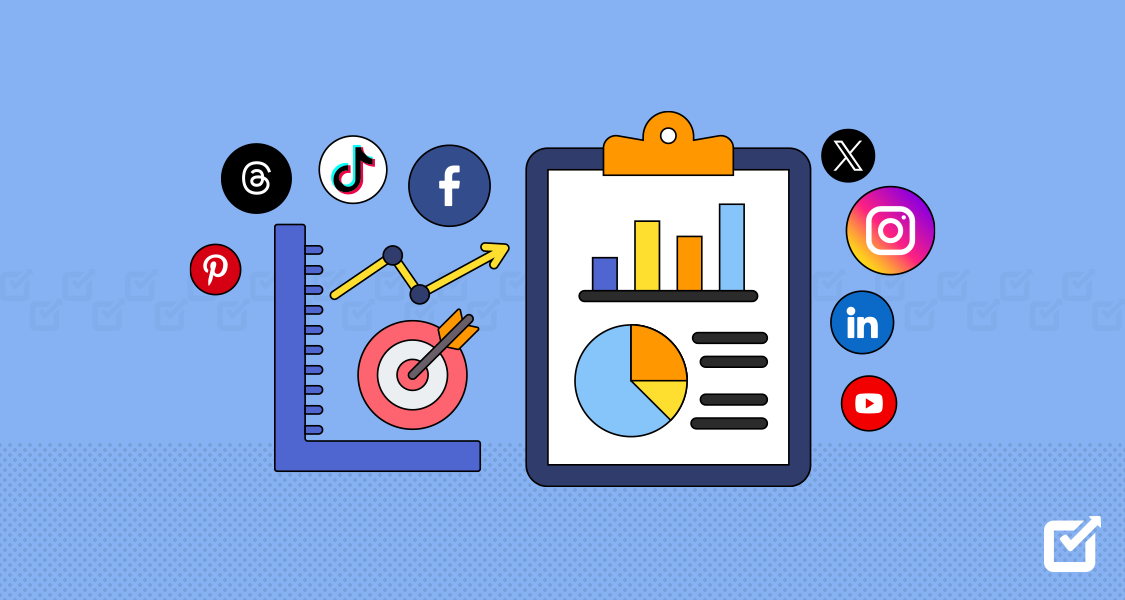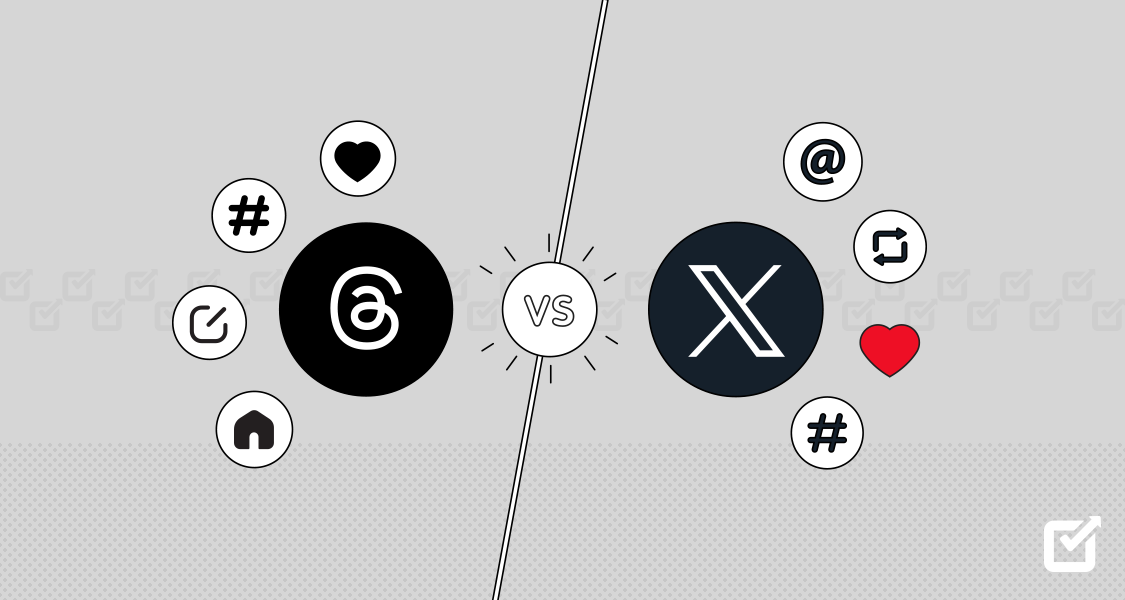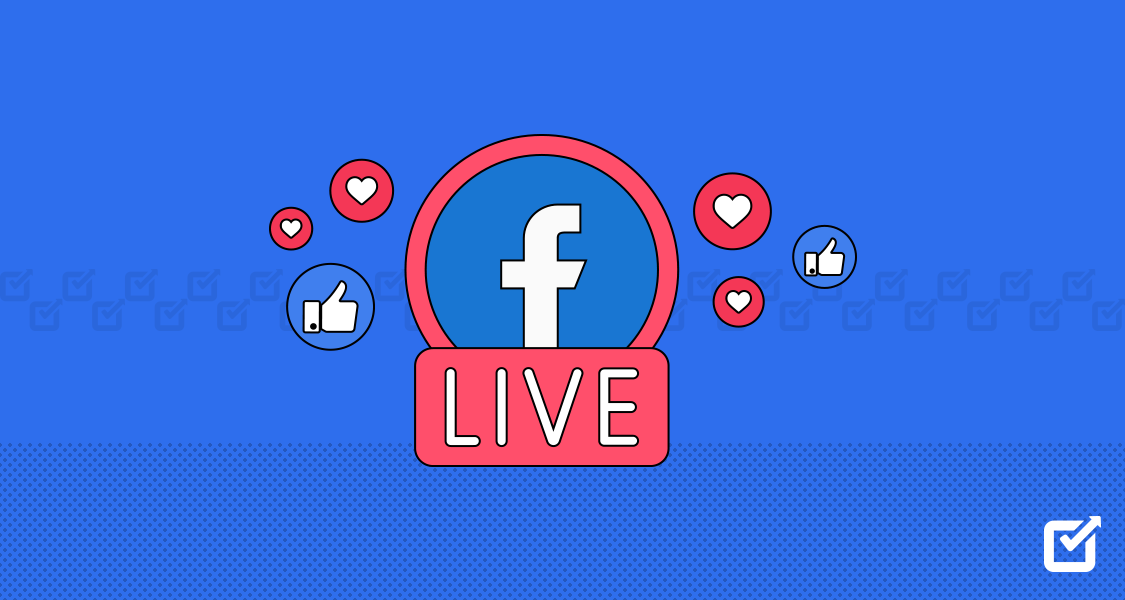Statistics data reveal that, at the beginning of 2024, over 5 billion people are using social media globally. That means over half the global population is scrolling, liking, and sharing on popular social media sites.
With such a massive audience at your fingertips, how do you know if your social media efforts are paying off? That’s where tracking the right social media metrics comes into play.
Gone are the days of simply counting likes and followers. In 2024, it’s all about using the right social media analytics tool to obtain metrics that can help you uncover the real impact of your social media presence.
What Are Social Media Metrics, and Why Are They Important?
Social media metrics are the numbers and data points that give you insights into the performance of your social media content. We’re talking about reach, engagement rates (such as likes, shares, comments, clicks, and impressions), and conversion rates.
Now, why should you care about these metrics? Well, tracking these crucial metrics helps you understand what’s resonating with your audience and what’s falling flat.
Armed with this valuable data, you can tweak your strategy, refine your content, and ultimately boost your impact and achieve your goals. Plus, social media metrics give you the hard data you need to prove your social media prowess to your boss or clients.
How to Set Up a Social Media Metrics Dashboard
Now that you know the social media metrics meaning, it’s time to get your social media metrics game on point with your very own dashboard. Here’s a step-by-step guide to help you get started:
Define Your Goals
First things first, what do you want to achieve with your social media efforts? Are you aiming to increase brand awareness, drive website traffic, boost engagement, or maybe all of the above? Get crystal clear on your goals—it’ll make tracking your metrics a whole lot easier.
Choose Your Key Metrics
With your goals in mind, it’s time to pick the metrics that matter most. For example, if you’re focused on engagement, you might track likes, comments, shares, and click-through rates. If you’re all about growing your audience, you’ll want to keep an eye on follower count and reach.
Select Your Tools
Now, let’s talk about social media metrics tools. There are plenty of social media analytics tools out there to choose from, ranging from freebies like Google Analytics and native platform insights to more robust options like Social Champ, Hootsuite, or Buffer. Find the one that suits your needs and budget.
Set Up Your Dashboard
Time to roll up your sleeves and get your hands dirty. Most analytics tools allow you to create custom dashboards where you can track all your key metrics in one convenient place. Check out the best social media dashboards for brands in 2024.
Establish Benchmarks
Rome wasn’t built in a day, and neither is your social media empire. To track your progress over time, you should set realistic benchmarks based on your past performance or industry standards.
Are you aiming for a 20% increase in engagement? Or maybe a 10% boost in website traffic? Whatever your goals, make sure they’re measurable and achievable.
Monitor and Adjust
Monitoring and adjusting your social media strategy is crucial because the digital landscape is constantly evolving. Therefore, you should keep a close eye on your metrics, tweaking your strategy as needed to stay on course.
You can also experiment with different content types, posting times, and audience targeting to see what works best for your brand.
Celebrate Your Wins
Last but not least, don’t forget to celebrate your victories, no matter how small. Hit a new milestone in followers? Pop the champagne. Increased engagement rates? Treat yourself to a victory dance.
Building a successful social media presence is no easy feat, so take a moment to congratulate yourself on a job well done.
Get Access to Social Champ’s Intuitive Dashboard!
Manage multiple social media platforms from a single, centralized hub.
Social Media Metrics to Track
Now that we’ve covered the basics—what social media metrics are, why they matter, and how to set up your very own dashboard—it’s time to dive into the nitty-gritty. Let’s take a closer look at the metrics that will truly make a difference in your social media strategy.
I’ll categorize these metrics into four key areas: reach, engagement, marketing, and customer service.
Social Media Reach Metrics
Reach metrics in social media analytics provide insights into the total number of unique views or exposures your content receives. Here are the main types of reach metrics:
Impressions
This is one of the social media metrics examples. Impressions represent the total number of times your content has been displayed on a user’s screen, whether it was viewed or scrolled past. It indicates the potential visibility and exposure of your content.
Reach
Reach measures the total number of unique users who have seen your content. Unlike impressions, which count every time your content is displayed, reach focuses on the unique individuals who have been exposed to your content at least once.
Organic Reach
Organic reach refers to the number of unique users who see your content through unpaid distribution, such as appearing on their newsfeed without any paid promotion. It’s a measure of how effectively your content is being discovered and shared without advertising.
Paid Reach
Paid reach measures the number of unique users who see your content as a result of paid advertising efforts. It includes sponsored posts, promoted tweets, boosted content, or any other form of paid promotion.
Viral Reach
Viral reach represents the number of unique users who see your content as a result of organic sharing by other users. It reflects the reach of your content beyond your immediate audience through shares, retweets, or forwards.
Tracking these reach metrics helps you gain insights into the overall visibility and exposure of your content, as well as the effectiveness of your organic and paid strategies in reaching your target audience.
Social Media Engagement Metrics
Tracking social media engagement metrics is crucial because they provide insights into how your audience is interacting with your content.
When you understand the level of engagement, you can gauge the effectiveness of your posts, identify what resonates with your audience, and tailor your strategy to foster deeper connections.
Let’s break down the essential engagement metrics you need to track:
Likes
Likes indicate that someone enjoyed your post enough to give it a nod of approval. Tracking likes helps you gauge the overall popularity of your content and identify which types of posts resonate most with your audience.
Comments
Comments are gold mines of feedback, offering valuable insights into what your audience is thinking, feeling, and experiencing. Monitoring comments allows you to foster meaningful conversations, address concerns, and build stronger relationships with your followers.
Shares
Shares are the ultimate compliment—someone loved your content so much that they wanted to share it with their own network. Tracking shares not only expands your reach but also indicates the level of advocacy and endorsement your content receives from your audience.
Replies/Reactions
Some platforms, like Twitter and Facebook, offer additional engagement options such as retweets, replies, or reactions (e.g., love, haha, wow). Monitoring these interactions gives you deeper insights into how your audience is responding to your content on a more nuanced level.
Engagement Rate
Engagement rate is a holistic metric that takes into account likes, comments, shares, and other forms of interaction relative to the number of followers or impressions. It provides a comprehensive view of how actively your audience is engaging with your content.
Engagement metrics are the social media metrics to track if you want to gain valuable insights into your audience’s preferences, behaviors, and interests. They help you optimize your social media strategy for maximum impact and effectiveness.
Social Media Marketing Metrics
Social media marketing metrics are the measurable data points used to evaluate the performance and effectiveness of your marketing efforts on social media platforms.
They are crucial for understanding your return on investment (ROI) and informing strategic decisions to optimize your social media marketing strategy.
Now, let’s delve into some key marketing metrics that you should be tracking:
Conversion Rate
Conversion rate measures the percentage of users who take a desired action, such as making a purchase, signing up for a newsletter, or downloading a resource after interacting with your social media content or ads. It helps assess the effectiveness of your marketing campaigns in driving tangible results.
Click-through Rate (CTR)
CTR is among the most crucial social media metrics examples. It measures the percentage of users who clicked on a link or call-to-action (CTA) in your social media content or ads compared to the total number of impressions. A high CTR indicates that your content is compelling and effective at driving traffic to your website or desired destination.
Cost Per Click (CPC)
CPC represents the average cost you pay for each click on your social media ads. It helps you understand the efficiency of your advertising budget and identify opportunities to optimize your campaigns for better performance and cost-effectiveness.
Cost Per Conversion (CPA)
CPA measures the average cost you incur for each desired action, such as a purchase or lead generated, as a result of your social media marketing efforts. It allows you to assess the overall effectiveness and profitability of your campaigns.
Return on Ad Spend (ROAS)
ROAS calculates the revenue generated from your social media advertising efforts relative to the amount spent on ads. It helps you evaluate the profitability of your advertising campaigns and determine their impact on your bottom line.
Monitoring these marketing metrics enables you to assess the effectiveness of your social media marketing efforts and optimize your campaigns for better performance. It also enables you to allocate your resources more efficiently to achieve your marketing goals.
Social Media Customer Service Metrics
Social media customer service metrics are the measurable indicators used to assess the quality, efficiency, and effectiveness of customer service provided through social media channels.
These metrics are crucial for businesses to gauge their ability to meet customer needs, address inquiries and concerns promptly, and maintain positive relationships with their audience.
Furthermore, marketing metrics provide valuable insights into the overall satisfaction level of customers and help businesses identify areas for improvement in their social media customer service strategies.
Let’s explore some key customer service metrics that you should track:
Response Time
Response time measures the average amount of time it takes for a business to respond to customer inquiries or messages received through social media channels. It’s a critical metric for assessing the efficiency and responsiveness of your customer service team in addressing customer needs in a timely manner.
First Response Time
First response time specifically measures the average time it takes for a business to provide the initial response to a customer inquiry or message received on social media. It reflects the speed at which your team acknowledges and begins addressing customer concerns, which is essential for delivering a positive customer experience.
Resolution Time
Resolution time measures the average amount of time it takes for a business to resolve customer issues or inquiries received through social media channels. It’s an important metric for evaluating the effectiveness of your customer service team in resolving problems and providing satisfactory solutions to customers in a timely manner.
Response Rate
Response rate calculates the percentage of customer inquiries or messages received on social media channels that are responded to by your customer service team. It provides insights into the overall engagement and responsiveness of your team in addressing customer needs and concerns.
Customer Satisfaction (CSAT) Score
CSAT score measures the level of satisfaction among customers who have interacted with your business through social media channels. It’s typically collected through post-interaction surveys or feedback forms and helps businesses gauge customer sentiment and identify areas for improvement in their social media customer service efforts.
Sentiment Analysis
Sentiment analysis involves analyzing the tone and sentiment expressed in customer messages or interactions received on social media channels. It helps businesses understand customer attitudes and perceptions towards their brand, products, or services, allowing them to identify and address potential issues or areas for improvement.
Customer Abandonment Rate
Customer abandonment rate, also known as churn rate, is a metric that measures the percentage of customers who start but do not finish a particular activity, such as filling out a form, completing a purchase, or engaging with a post.
This is an important social media metric for businesses as it provides insights into areas where users may encounter obstacles or friction points in their customer journey. Understanding these issues is essential as it helps you to optimize your processes and improve overall user experience and conversion rates.
Tools for Tracking Social Media Metrics
Calculating likes, comments, shares, and engagement rates by hand is not only time-consuming but also prone to errors. That’s why you need the right tools.
With the help of social media analytics platforms and software, you can effortlessly track, measure, and conduct a thorough social media metrics analysis that can empower you to make data-driven decisions and stay ahead of the curve.
Here are the different types of tools for tracking social media metrics:
Network-Specific Metrics Tools
Social media platforms come equipped with their own built-in analytics. Sure, the specifics might differ a bit between platforms, but they all do a pretty solid job of helping you keep tabs on your social media game.
Here’s a quick rundown of what three of the most popular social media sites for brands, influencers, and content creators have to offer:
Meta Business Suite Analytics
Meta Business Suite Insights are tools provided by Meta that offer users a quick and comprehensive overview of their Facebook and Instagram strategies’ performance.
To access Facebook audience insights, you can go to Meta Business Suite and navigate to the Insights section.

Meta Business Suite Analytics – Step 1 Once you click the Insights tab, you’ll find detailed analytics and metrics.

Meta Business Suite Analytics – Step 2 These Insights can allow you to uncover audience demographics, reach, engagement metrics, and the cross-spend of your ad account.
YouTube Analytics
YouTube analytics is a powerful social media analytics tracker that allows you to track and analyze the performance of your YouTube videos and channels. It offers a wide range of metrics and insights, including views, watch time, audience demographics, engagement metrics (such as likes, comments, and shares), revenue generated from ads, and more.
To access YouTube Analytics, sign in to YouTube, click your profile picture in the top-right corner, and select “YouTube Studio.”

YouTube Analytics – Step 1 In the YouTube Studio dashboard, click on the “Analytics” tab on the left-hand side.

YouTube Analytics – Step 2 Once you go to the analytics page, you’ll find a variety of reports and metrics to analyze the performance of your videos and channel.

YouTube Analytics – Step 3 YouTube Analytics provides valuable insights that can help you understand your audience, optimize your content strategy, and grow your channel effectively.
LinkedIn Analytics
If you have a social media presence on LinkedIn, you should also track the social media metrics that are specific to this network.
To access LinkedIn analytics, sign in to your account, scroll down a bit to locate the “Analytics” section, and click on “Show all analytics” to go to the analytics page.

LinkedIn Analytics 1 Within the analytics page, explore various metrics and data points, including post impressions, audience demographics, and profile views.

LinkedIn Analytics Step 2 When conducting a social media metrics analysis on LinkedIn, be sure to identify areas for improvement and take action to optimize your strategy or performance on the platform.
Related Article: 12 LinkedIn Metrics to Track for Effective Analytics
Google Analytics
While Google Analytics primarily focuses on website data, it can also be instrumental in social media analytics by providing valuable insights into how social media channels drive traffic, engagement, and conversions on your website.
Here’s how Google Analytics helps with social media analytics:
Traffic Sources
Google Analytics allows you to track the sources of traffic to your website, including social media platforms. You can see which social media channels are driving the most traffic to your site, how users from different social networks behave on your site, and which social media campaigns are the most effective in driving website visits.
Audience Insights
Google Analytics provides detailed demographic and interest data about your website visitors, including those who come from social media channels. This information helps you better understand your social media audience, tailor your content to their preferences, and refine your targeting strategies.
Engagement Metrics
While Google Analytics doesn’t track engagement metrics directly on social media platforms, it can provide insights into user engagement with your website content that originates from social media. You can analyze metrics such as bounce rate, time on page, and pages per session to gauge the quality of traffic from social media channels.
Conversions
By setting up goals and conversion tracking in Google Analytics, you can measure the effectiveness of your social media efforts in driving desired actions on your website, such as form submissions, purchases, or sign-ups. This helps you understand the ROI of your social media campaigns and identify areas for improvement.
Overall, Google Analytics complements social media analytics by providing deeper insights into how social media channels contribute to your website’s performance and overall business goals.
Social Media Management Tools
Social media management tools are invaluable resources for tracking and analyzing social media metrics. Leveraging these tools, you can gain deeper insights into your performance, optimize your strategies, and achieve your social media goals more efficiently.
Social Champ is one of the most robust social media metrics tools available. It provides a centralized dashboard where you can view all your social media accounts in one place. This makes it easy to monitor key metrics and performance indicators across multiple platforms simultaneously, saving you time and effort.
Social Champ also offers real-time analytics that gives you up-to-the-minute insights into how your content is performing. This allows you to quickly identify trends, capitalize on opportunities, and respond promptly to any issues or concerns.
This powerful social media metrics tracker also allows you to create customizable reports that focus on the metrics that matter most to your business. Whether you’re interested in engagement rates, audience demographics, or conversion tracking, you can tailor your reports to suit your specific needs and goals.
Unlock the Insights to Supercharge Your Social Strategy!
With Social Champ, track, analyze, and optimize your performance with powerful social media metrics.
Conclusion
Creating a strong presence on popular social media sites is no longer just an option—it’s practically a necessity for businesses, influencers, and individuals alike. But staying on top of your social media game isn’t just about posting cute cat videos or sharing your latest brunch escapades. It’s about understanding the nitty-gritty details that drive engagement, influence, and, ultimately, success. You can leverage network-specific analytics and tools like Social Champ to gain social media metrics that can help you optimize your social media strategy.

















